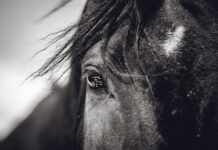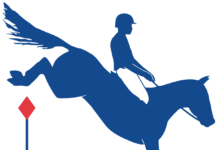The restraint of a backward elbow does more than throw off a horse’s balance. It has an emotional impact too. Horses are creatures that are built to move. They can easily become frustrated and/or anxious by the sensation of confinement. Having your neck compressed and your head pulled behind the vertical isn’t much fun either. Even the most athletic horse’s performance will suffer, as will her attitude, when the rider’s posture is top-heavy and her elbows are misplaced.
The cure for all these problems is simple: Push those elbows forward! They should be slightly in front of your body so that your hands hover slightly above and to the sides of your horse’s withers. In this position, your shoulders can settle back over your hips so you can sit tall and proud in the saddle (and help your horse move better!). Some rider’s elbows go back because they are trying, perhaps unconsciously, to feel safer in the saddle. However, it’s a false sense of security and a habit that is wise to work on letting go.
Backward elbows create heavy hands, but successful communication with your horse requires a light touch. That’s your arms’ only–but absolutely essential–purpose when you’re riding your horse: to provide clear yet gentle communication and support. It’s supple forward-facing elbows following your horse’s movement that make that happen. By mirroring every subtle change in the position of her head and neck, your horse can relax, carry herself in comfort, and enjoy having a rider on her back.
Test Your Equestrian IQ:
Leading a Horse: What’s Wrong with This Picture
Dale Rudin is a CHA-certified riding instructor and clinician with a mindful and balanced approach to horsemanship and riding.
www.un-naturalhorsemanship.com





